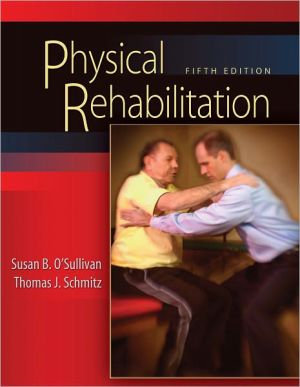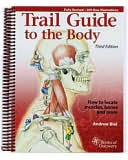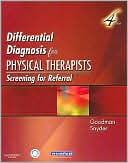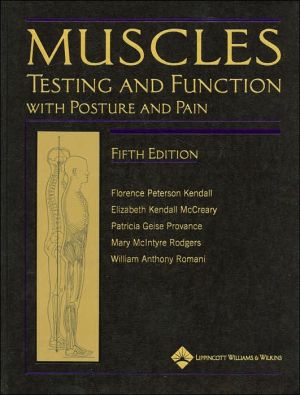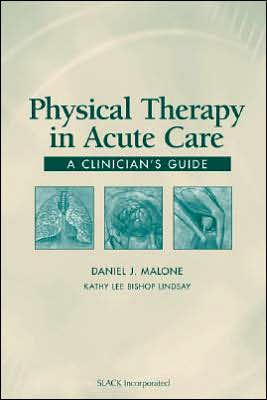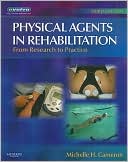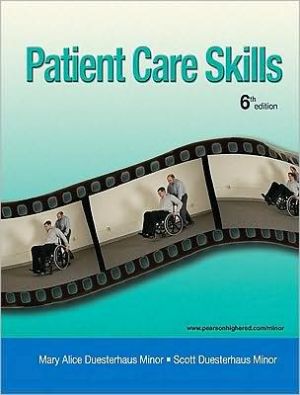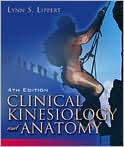Physical Rehabilitation
Here is the only comprehensive, curriculum-spanning text for students and a key reference for practitioners! It focuses on the rehabilitation management of adult patients, integrating basic surgical, medical, and therapeutic concepts to explain how to select appropriate examination procedures and to develop treatment goals and plans. The more user friendly 5th Edition features a new, two-color design and more photographs, illustrations and tables.\ \ \ This book...
Search in google:
Here is the only comprehensive, curriculum-spanning text for students and a key reference for practitioners! It focuses on the rehabilitation management of adult patients, integrating basic surgical, medical, and therapeutic concepts to explain how to select appropriate examination procedures and to develop treatment goals and plans. The more user friendly 5th Edition features a new, two-color design and more photographs, illustrations and tables.Key Features • Integrates current research in basic and clinical sciences with physical therapy assessment and treatment procedures. New Evidence Summary boxes in each chapter that evaluate current research on specific topics and support evidence-based practice. • Enhances critical thinking skills with open-ended clinical case studies. (Suggested answers appear in an appendix.) • Offers a new chapter, Amyotrophic Lateral Sclerosis. • Includes new content on strategies for fall prevention, virtual reality rehabilitation, body-weight treadmill training, and upper extremity amputations and prosthetics. • Integrates the goals, examination procedures, and interventions of the APTA's Guide to Physical Therapist Practice. • Incorporates a new, enhanced design with photographs, illustrations and a consolidated glossary for easier referencing and a more streamlined presentation of the material in each chapter. Gail M. Huber This book is the third edition of an overview text on physical rehabilitation. The topics cover the assessment and treatment of a variety of populations seen by physical therapists. Initial chapters on decision-making, psychosocial aspects of care and values sets the stage for a holistic approach to patient care. The book is designed to serve as a basic text for students. It is also designed as a reference text for clinicians. It fulfills both objectives well. Topic areas review physiology and pathophysiology in a clinical context. Fundamental treatment strategies are reviewed. The clinical context is very important to students and the physiology review is useful to the clinicians. Review questions and a glossary at the end of each chapter are additional learning tools for students. Clinicians will find many samples of treatment protocols and sample forms for assessment and patient education. Most chapters contain extensive up-to-date references to guide clinicians who want to study further. As a basic reference text, the book covers a wide variety of topics. It is organized in a clinically relevant way. Readers should realize that each chapter is only an overview of a topic. Some chapters could better utilize information presented earlier. For example, measurement of blood pressure is covered very well under vital signs and less thoroughly under peripheral vascular disease. Some chapters are better referenced than others. Although nine chapters cover assessment, measurement issues are not prominently discussed. Coverage of musculoskeletal rehabilitation is covered in only one chapter. Students will definitely find the book helpful. Clinicians should use the book as a quick reference.
I. Introduction to Patient Care: Decision Making, Psychosocial Factors, and Values1. Clinical Decision Making2. Influence of Psychosocial Factors on Rehabilitation3. Influence of Values on Patient Care: Foundation for Decision MakingII. Examination4. Vital Signs5. Examination of Sensory Function6. Musculoskeletal Examination7. Examination of Coordination8. Examination of Motor Function: Motor Control and Motor Learning9. Electromyography and Nerve Conduction Velocity Tests10. Examination of Gait11. Examination of Functional Status and Activity Level12. Examination of the EnvironmentIII. Intervention Strategies for Rehabilitation13. Strategies to Improve Motor Function14. Locomotor Training15. Chronic Pulmonary Dysfunction16. Heart Disease17. Vascular, Lymphatic, and Integumentary Disorders18. Stroke19. Multiple Sclerosis20. Amyotrophic Lateral Sclerosis21. Parkinson's Disease22. Traumatic Brain Injury23. Traumatic Spinal Cord Injury24. Vestibular Disorder25. Amputation26. Arthritis27. Burns28. Chronic Pain29. Cognitive and Perceptual Dysfunction30. Neurogenic Disorders of Speech and LanguageIV. Orthotics, Prosthetics, and the Prescriptive Wheelchair31. Orthotics32. Prosthetics33. The Prescriptive WheelchairGlossary
\ Gail M. HuberThis book is the third edition of an overview text on physical rehabilitation. The topics cover the assessment and treatment of a variety of populations seen by physical therapists. Initial chapters on decision-making, psychosocial aspects of care and values sets the stage for a holistic approach to patient care. The book is designed to serve as a basic text for students. It is also designed as a reference text for clinicians. It fulfills both objectives well. Topic areas review physiology and pathophysiology in a clinical context. Fundamental treatment strategies are reviewed. The clinical context is very important to students and the physiology review is useful to the clinicians. Review questions and a glossary at the end of each chapter are additional learning tools for students. Clinicians will find many samples of treatment protocols and sample forms for assessment and patient education. Most chapters contain extensive up-to-date references to guide clinicians who want to study further. As a basic reference text, the book covers a wide variety of topics. It is organized in a clinically relevant way. Readers should realize that each chapter is only an overview of a topic. Some chapters could better utilize information presented earlier. For example, measurement of blood pressure is covered very well under vital signs and less thoroughly under peripheral vascular disease. Some chapters are better referenced than others. Although nine chapters cover assessment, measurement issues are not prominently discussed. Coverage of musculoskeletal rehabilitation is covered in only one chapter. Students will definitely find the book helpful. Clinicians should use the book as a quick reference.\ \ \ \ \ Reviewer: Gail M. Huber, MHPE, PT (Northwestern University Feinberg School of Medicine)\ Description: This book is the third edition of an overview text on physical rehabilitation. The topics cover the assessment and treatment of a variety of populations seen by physical therapists. Initial chapters on decision-making, psychosocial aspects of care and values sets the stage for a holistic approach to patient care. \ Purpose: The book is designed to serve as a basic text for students. It is also designed as a reference text for clinicians. It fulfills both objectives well. Topic areas review physiology and pathophysiology in a clinical context. Fundamental treatment strategies are reviewed. \ Audience: The clinical context is very important to students and the physiology review is useful to the clinicians. \ Features: Review questions and a glossary at the end of each chapter are additional learning tools for students. Clinicians will find many samples of treatment protocols and sample forms for assessment and patient education. Most chapters contain extensive up-to-date references to guide clinicians who want to study further. \ Assessment: As a basic reference text, the book covers a wide variety of topics. It is organized in a clinically relevant way. Readers should realize that each chapter is only an overview of a topic. Some chapters could better utilize information presented earlier. For example, measurement of blood pressure is covered very well under vital signs and less thoroughly under peripheral vascular disease. Some chapters are better referenced than others. Although nine chapters cover assessment, measurement issues are not prominently discussed. Coverage of musculoskeletal rehabilitation is covered in only one chapter. Students will definitely find the book helpful. Clinicians should use the book as a quick reference.\ \ \ BooknewsNew edition of a text on the rehabilitation management of adult patients. The initial three chapters examine clinical decision making, psychosocial concomitants to disability and rehabilitation, and the influence of values on patient care, thus directing the reader early on to develop an understanding of the whole patient and to build effective problem-solving skills. Subsequent chapters focus on procedures used in assessment of patients with physical impairments and disabilities, general treatment strategies for improving motor control and motor learning and gait, common conditions encountered in general practice together with appropriate examination and intervention strategies, and vestibular rehabilitation. Special topics include prosthetics, orthotics, the prescriptive wheelchair, and biofeedback. Edited by O'Sullivan (physical therapy, U. of Massachusetts Lowell) and Schmitz (physical therapy, Long Island U.). Annotation c. Book News, Inc., Portland, OR (booknews.com)\ \ \ \ \ 3 Stars from Doody\ \
